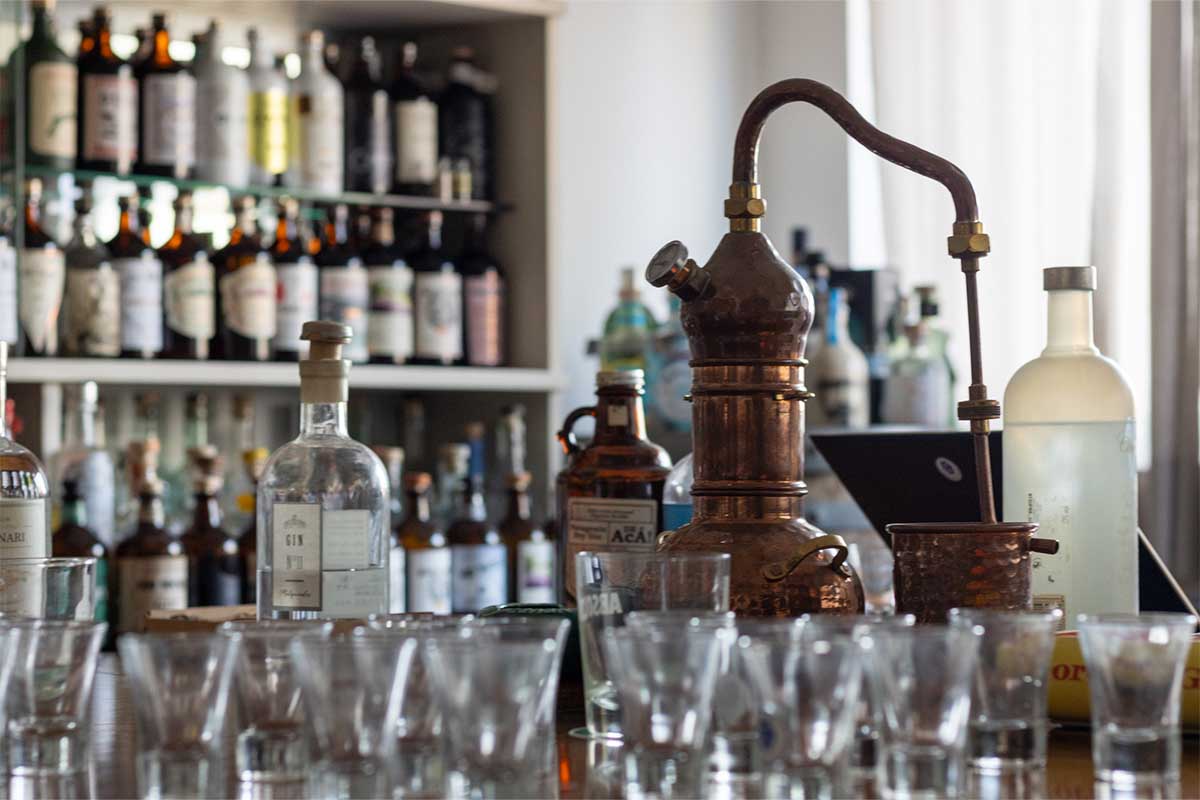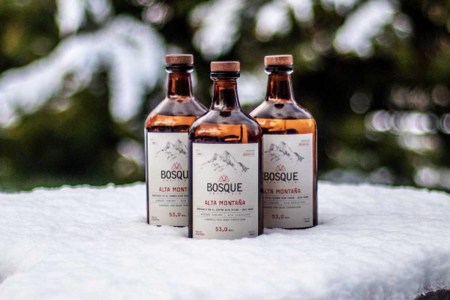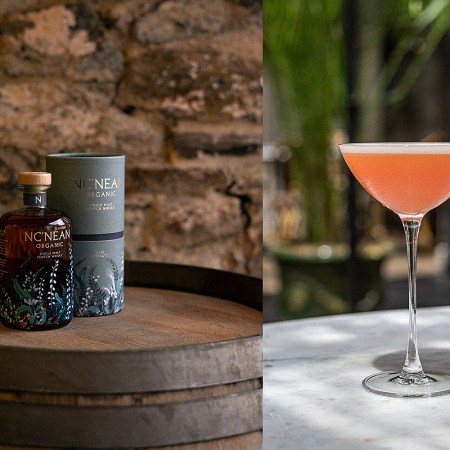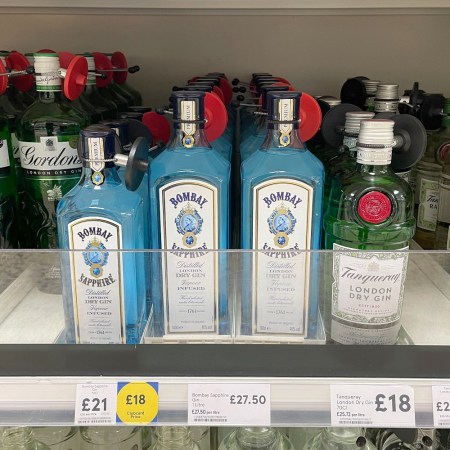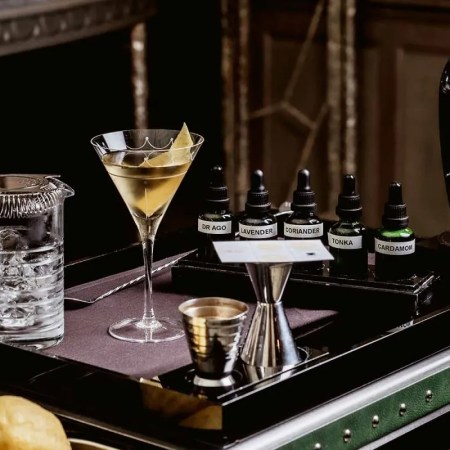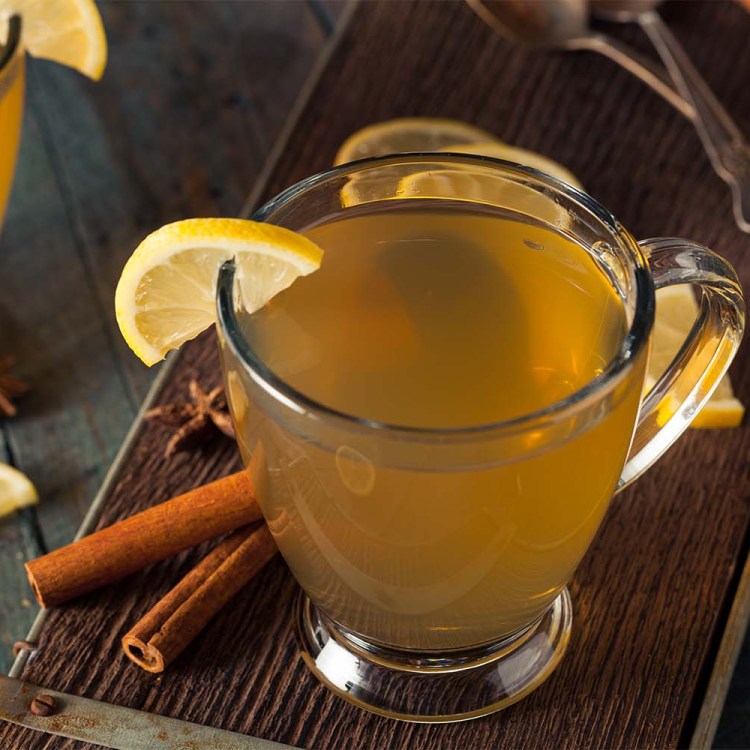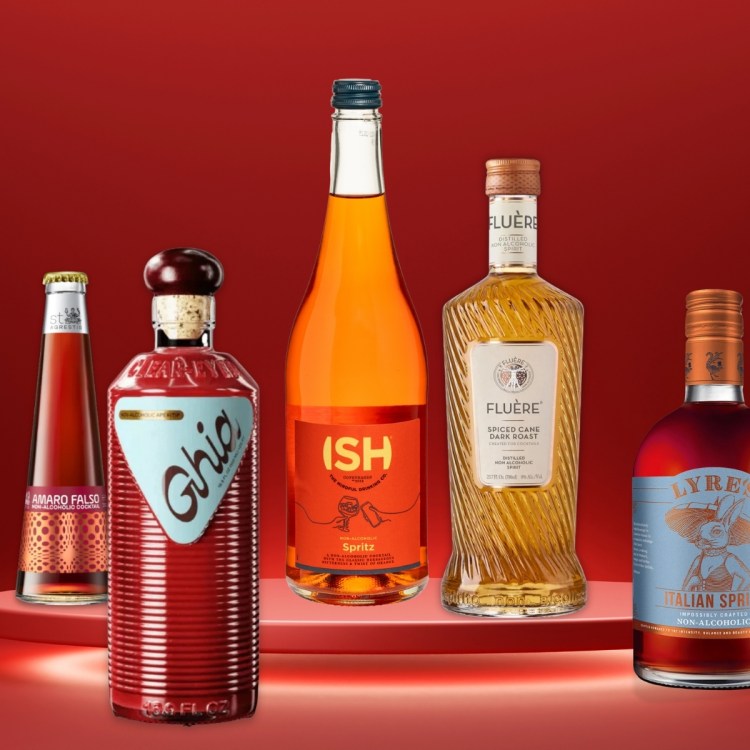It’s a Thursday night in Buenos Aires’ Chinatown. The evening crowd is trickling in from the nearby train station. Their loud energy drowns out the Classic Milonga music playing softly from an apartment across the street. The bartender at the gin bar, Chintoneria, reaches for a bottle of Apóstales Gin. They make two gin and tonics and hand them to the customers, standing like sardines in a can amongst the crowd pouring in. In Buenos Aires, gin bars like this one are opening up all over the city and locals, known as porteños, couldn’t be happier.
Gin has taken the country by storm. According to an IWSR drinks market analysis, experts predict worldwide gin consumption will continue to rise over 4% from 2018 to the end of 2023. But in Argentina, gin consumption has risen by over 80% during the same period, thanks in part to new domestic gins that offer drinkers something new and uniquely Argentine.
A little over a decade ago, British gin ruled the market. Now, over 400 brands of domestic artisanal and large-scale gins exist in Argentina. The country’s gin renaissance started when the famous Argentine bartender and entrepreneur, Tato Giovannoni, created the brand Príncipe de los Apóstoles. This premium gin incorporated botanicals like eucalyptus and the Argentine tea known as yerba mate into its recipe. This fusion of native South American botanicals made this gin stand out from the rest.
If You Want the Best Gin of 2022, Head to Argentina
The Bosque distillery headlined this year’s World Gin Awards, which also saw honors go to gins based out of Slovenia, New Zealand and LebanonFollowing Apóstoles’ creation and popularity, new labels quickly hit the market such as Heraclito, Buenos Aires Gin and Terrier (and all this in one of the world’s great wine-producing countries). Soon the international spirits industry took note. Argentine gins, with their unique botanicals and high-quality distillation, started to win over the most recognized brands. The more awards domestic gins brought home, the more people wanted in on the action.
As the global COVID-19 pandemic approached, another wave of Argentine craft gin hit the market with labels like Alma, Bosque, Montarraz and Gina. “The craft gin market in Argentina has experienced impressive growth in recent years. Consumers are increasingly interested in trying high-quality, authentic, local products, and that has fueled the rise of numerous artisan labels across the country,” says Taté Miretti, head distiller at Patagonian Distillery. Patagonia is the first distillery in the province of Neuquén and its label Gina is Miretti’s expression of her home.
Miretti wanted to create something feminine in a world where men are the majority in both consumption and production. “There are very few women distillers in Argentina and with the birth of my daughter Gina, I decided to pay tribute to her by creating a gin in her name,” she says.
To craft Gina, Miretti explored ingredients and settled on a mix of flowers and botanicals native to Patagonia. “In Gina’s recipe, we use a careful selection including lavender, roses, elderflower, jasmine, lavender, orange blossom and chamomile. We also incorporate other herbs and spices from Argentine Patagonia,” she says. “These botanicals add a distinctive character to our gin, offering an elegant and sophisticated flavor profile.” With this profile, Gina earned a gold medal at the World Gin Awards in 2021 for the best signature botanical and bronze at the IWSC the same year.
Like Gina, many brands flourished through the pandemic. With more time to experiment and dream, artisanal distillers saw an opportunity in the market and began crafting gin.
In the heart of Argentina’s wine country of Mendoza, four high school friends, Lisandro Vergara Amodeo, Santiago Gabrielli, Andrés Martinez, and Ariel Salassa, created Gin Montarraz as the pandemic wore on. The team ventured into the world of gin in 2020. Three of the partners were engineers and brought their scientific knowledge into their business.
Like many Argentine gins, Montarraz utilizes ingredients found locally in their region. “The great diversity of climates and flora that exist in our country makes many products from different latitudes appear that have characteristics of the different areas. That we believe gives great richness to Argentine gins,” says Amodeo.
The diversity of climates in Argentina also means there’s room for expression. This has allowed an environment of friendly competition to thrive. “Everyone is convinced that the greater the union between the entrepreneurs of the sector; The greater the growth of the market and the better the artisanal gin industry in Argentina,” says Amodeo.
Small craft gins created by small teams or individuals like Gina and Monterraz compete with passion projects by big names in the industry like Bosque. Its Alta Montaña Gin won Gold in the World Gin Award’s Best Contemporary Gin category in 2022. After a decade in the beverage and entertainment industry, the team behind the popular Argentine craft beer brand Temple Brewery threw their hat into the ring with their navy strength, Bosque Alta Montaña Gin.
“Our concept is anchored in the wild juniper of Patagonia. The rest of the botanicals are: coriander, cloves, orange blossom, cardamom, lemon, grapefruit and credrón,” says Juan Chereminiano, one of the project’s founders. Alta Montaña has intense floral aromas with bright flavors of juniper, a silky finish, and a whopping 53% ABV. “The greater presence of alcohol generates another volatility of aromas, opening other profiles of the oils that the botanicals give off in the maceration,” says Chereminiano.
Bosque is now an internationally recognized brand. It has other popular gin styles like Nativo, a softer gin with bright citrus on the nose and 42% ABV and its matured Refugios, which is aged in French oak barrels.
Along with its gins, the team at Bosque campaigns for sustainability and environmental protection, especially in Argentine Patagonia, where they source their wild juniper. They partner with the organization ReforestArg, which strives to re-introduce native species and combat deforestation.
Like other distillers, Chereminiano is hopeful about the potential of Argentine gins in the global market. “In Argentina, some 300 gin brands were born from the pandemic to today, where at least 10-15% are doing things really well, with products of the highest quality and with an identity, a concept,” he says.
Throughout all this growth in the industry, businesses around the country saw the opportunity to connect the craft distilleries with their consumers. In the neighborhood of Recoleta, famous for its cemetery and 19th-century Art Nouveau architecture, is The Gin Place, a one-stop shop for Argentine gins. Owner Alejo Berraz curates a wide selection of local gins and offers customers guided tastings. “Every day, a new gin comes out, replicating what happened in Spain a decade ago with young people venturing into the market, coming from every small town or city in Argentina,” says Berraz.
“One of the outstanding characteristics of Argentina is that because of its size, it has a wide variety of climates and soils, with a tremendous variety of wild botanicals that give gins a great diversity in flavors,” says Berraz. Lemons from Tucuman, flowers such as lavender and jarilla from Patagonia, grape skins from Mendoza, and Yerba Mate, the indigenous national tea, are all used to create profiles unique to Argentina. Even ingredients like muña muña (Andean mint) and coca leaf are added to some handcrafted gins.
Undoubtedly, the most important ingredient is the wild juniper of Patagonia. Native to Europe, common juniper bushes were first introduced in Patagonia around 1960 in the town of El Bolsón. Within a decade, the prickly evergreen spread invasively throughout the region. Today, craft distillers work alongside teams of harvesters and new farms dedicated to growing the now-famous Patagonian Juniper for gin making.
From Salta near the border of Bolivia to Ushuaia, the southernmost city in the world, and in the dense urban landscape of Buenos Aires, nothing has led people to trade the aromas of malbec with juniper more than the gin and tonic. This global cocktail has found a new home in Argentina. From up-scale bars like Casa Cavia to local haunts such as Chintoneria and cafes like Bajamar, bartenders use the diverse profiles of local gins to bring customers the flavors of their country.
The gin market in Argentina has experienced a remarkable boom, fueled by the pandemic and an ever-increasing array of styles and varieties from all corners of the country, spanning from Ushuaia to Salta. Pushing its rise are the drinkers leaving behind traditional beers and wine in search of more innovative and diverse flavors. Their favorite drink, the gin and tonic, allows them to explore and experiment with the wide range of gin flavors and combinations, with a particular emphasis on the gin itself. The consumption of gin predominantly takes place in the comfort of their own homes, reflecting the growing popularity and appreciation for this versatile spirit that’s now as Argentine as grilled steak and World Cup Championships.
Every Thursday, our resident experts see to it that you’re up to date on the latest from the world of drinks. Trend reports, bottle reviews, cocktail recipes and more. Sign up for THE SPILL now.
